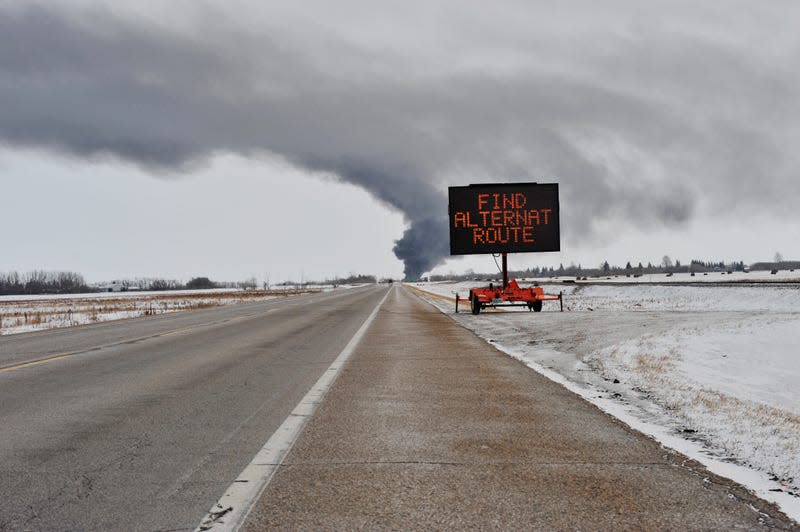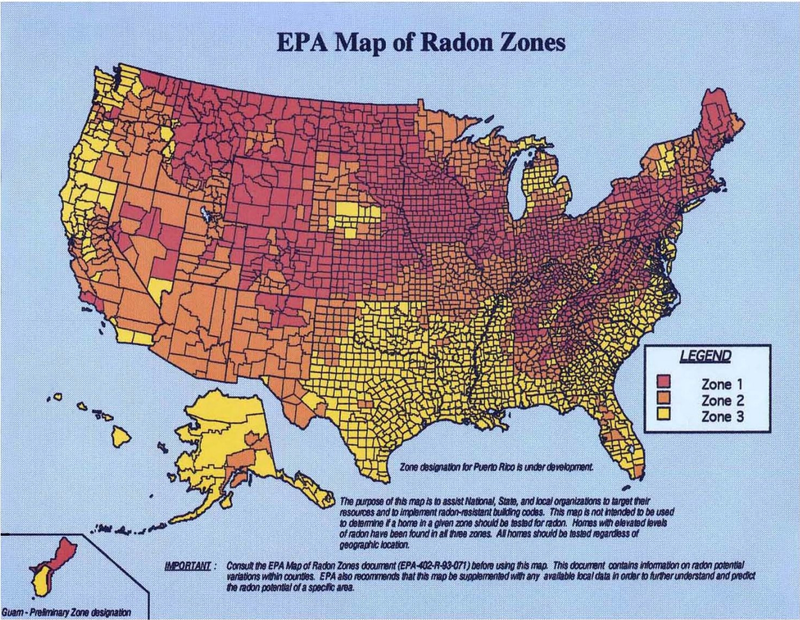Radon: Testing your home for the earth’s evil vapors
Situation breakdown
Uranium and thorium are decaying. In rocks, seas, and streams, two of the Earth’s most plentiful radioactive elements are breaking down into radon, a colorless, odorless, tasteless gas. This gas dissipates into the air, collects in mineshafts, and pools in basements. As radon decays, it produces radon daughters that grasp onto airborne dust particles. Inhale enough of these particles for too long, and human DNA starts to deteriorate. For an estimated 21,000 Americans each year, according to the Environmental Protection Agency (EPA), that turns into death from lung cancer.
Read more
For decades, the EPA has sounded the alarm on radon, the second-leading cause of lung cancer among Americans after smoking. Despite an annual radon action month, public response has been passive, with most radon testing done as a routine part of buying a house. While it certainly causes cancer, radon’s public image runs the spectrum from the EPA’s abundance of caution, to celebrities revealing that their oncologists suspect radon to be the source of their lung cancer, to scientists trying to determine whether low doses are indeed something to be concerned about, ending at radon enthusiasts who bathe themselves in the radioactive gas of decommissioned mines for its unproven therapeutic properties.
Let’s go spelunking for the facts.
By the digits
1: Rank of radon as an environmental cause of any type of cancer, in the US
4: The level of picocuries (a unit of measurement that expresses the concentration of radioactivity in a gas) per liter of indoor air that the EPA has deemed the level for taking action against radon
21,000: Estimated number of people in the US who die each year from lung cancer due to radon exposure; about 2,900 of those deaths are among people who have never smoked
1 in 15: Number of US homes with elevated levels of radon, according to the EPA
$0: Price for a pint of radon-infused water from a decommissioned uranium mine in Montana
Explain it like I’m 5

Radon is everywhere
Unlike other dangerous exposures to carcinogens, with radon there are no careless manufacturers or derailed trains full of chemicals to blame. Radon gas has emanated from the Earth’s crust for millenia, and it only became a problem with the invention of the indoors, where the radon gas that seeps from rocks becomes trapped and accumulates. Without a villain, the onus is on individuals to determine whether their homes are built over a radon-breathing crack in the earth.
And the cost of finding out is low. Radon test kits are available online for around $20, less if your state subsidizes the kits. There are two types of tests, short-term and long-term, and they involve placing the kit in a basement or ground floor of a home, where the highest levels of radon would accumulate, if present. In the US, there is a robust industry of companies that specialize in radon mitigation (pdf), which can include sealing cracks in floors and wall joints, to more involved ventilation systems to lower radon levels.
It takes a lot of exposure over a long period of time for cancer to develop, and radon is everywhere. The average radon level outdoors is 0.4 picocuries per liter (pCi/L), and indoors it is 1.3 pCi/L. The EPA set the action level at 4 pCi/L per liter of air, but suggests that homeowners consider making repairs (pdf) if their levels are between 2 to 4 pCi/L. Bringing radon levels to below 2 pCi/L is difficult.
Listed
Pick your poison
Radon’s slow-moving, quiet ubiquity has not lent itself to urgent action from the general public so far, and it may help to align the risk with more vivid ways to die (pdf).
🧪 At 2 pCi/L, a non-smoker is as likely to die from radon-induced lung cancer as from poison.
🚘 At 4 pCi/L, the death risk is about the same as dying from a car crash.
🏊 At 20 pCi/L, you’re 35 times more likely to die of lung cancer than drowning.
Quotable
“The radon saga is a scientific thriller with tragic features and political confounders.”
—W. Jacobi in “The History of the Radon Problem in Mines and Homes”
Pop quiz

What’s the threshold below which radon does not increase cancer risk?
A. 0 pCi/L
B. 4 pCi/L
C. 10 pCi/L
D. 100 pCi/L
Find the answer at the bottom. We promise there’s no radon down there.
Brief history
1537: Paracelsus, a Swiss physician, writes a book noting a lung ailment killing young men in the silver mines of Schneeberg, Germany.
1879: “Schneeberger lung disease” is identified as lung cancer.
1971: A 17-year study of uranium miners is published, with the finding that lung cancer risk increases with radon exposure.
1984: Stanley Watras, an engineer at Pennsylvania’s Limerick Generating Station—a nuclear power plant—sets off alarms at work from stratospheric radiation levels. It turned out Watras’s house was built on top of a radon-emitting crack in the earth, and he was absorbing radiation from home, not work, alerting Americans to the possibility that radon wasn’t just a mineshaft problem.
1986: The EPA sets the indoor radon action level to 4 picocuries per liter of air.
2002: The EPA designates January as National Radon Action Month in the face of radon apathy from the general public.
2017: US president Donald Trump attempts (and fails) to cut the EPA’s radon program, with support from some scientists who argue that the EPA’s warnings represent an abundance of caution rather than clear scientific evidence about the cancer risk of low levels of radon exposure.
Fun fact!
The average person in the US has an annual radiation dose of 6.2 millisieverts, the unit used to describe levels of exposure to radioactive materials. Radon and thoron make up just over a third of that exposure. Cosmic radiation from space and internal radiation generated by one’s own body produce about 5% each of radiation exposure each year. Most of the rest of radiation exposure comes from medical procedures, like nuclear medicine and X-rays.
Poll
What’s your radon fear level?
Give me all the sub-slab depressurization systems NOW.
It’s probably fine in here.
Is there a radon-deniers Facebook group I can join?
Share your deepest, darkest thoughts on radon with us.
💬 Let’s talk!
In last week’s poll about pollen, 43% of you said you’ve got Benadryl on speed dial and are locked and loaded for allergy season. The rest of you said you don’t really deal with allergies and we’re extremely—*pauses to sniffle*—jeal-ACHOO-ous.
🤔 What did you think of today’s email?
💡 What should we obsess over next?
Today’s email was written by Aurora Almendral (suddenly worried about the risk of death by poisoning), and edited and produced by Annaliese Griffin (bought a radon test while editing this).
The correct answer to the pop quiz is A., 0 pCi/L. There is no safe level of radon exposure, according to the US Centers for Disease Control and Prevention. However, radon is everywhere, and the scientific evidence is not clear whether low levels of exposure significantly increases cancer risk.
More from Quartz
Sign up for Quartz's Newsletter. For the latest news, Facebook, Twitter and Instagram.


